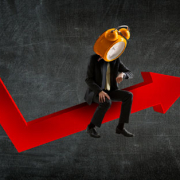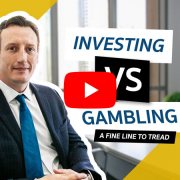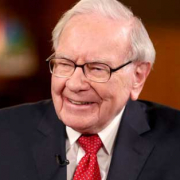
Recently we have seen significant market downturns and it has been widely reported that the FTSE 100, the benchmark index for the UK stock market, has actually had a negative return over the last two decades. So when people like me tell you that investing is a long term game and short term market volatility should be somewhat ignored (certainly expected), does this revelation not negate that argument?
On the face of it, that would certainly appear to be the case. However, what this statistic does not include, which the below article eludes to, is dividends.
So what is a dividend? A dividend is a payment made to a shareholder. If, for example, you buy shares in BP, you can expect to receive a dividend from BP and, often, these dividends can be significant. Not all companies pay dividends, often some of the large tech stocks in the US do not, however, most of the stalwarts of the FTSE 100 certainly do. Indeed, dividends are often an attractive way for investors to gain an income and there is significant pressure on CEOs of listed firms to ensure that dividends are paid to shareholders regardless of market conditions.
When we look at the performance of the FTSE 100 over the same period of time, but also include the dividends that would have been received by shareholders (total return), this significantly skews the maths back towards holding equity as a great long term wealth builder (the return moves from a negative 14% to a positive 77% over the same time frame).
One of the main issues with investors, however, is that we are all biased in one way or another. It is common for UK based investors to favour UK based stocks, this is common within pension funds for example. In order to efficiently invest for the long term, we need to be looking much wider than the UK and considering the entire globe. Indeed, the performance of the US market or the global index as a whole during the same period of time being referenced above is markedly different.
So, do not always believe the headline. It is important to speak to somebody who has a reasonable degree of market understanding and consider whether there is any information being omitted from the headline that would actually fundamentally alter the statement.
U.S. Stock Bear Markets and Their Subsequent Recoveries
By Simon Lambert
The FTSE 100 has gone nowhere in 20 years, so why are investors told to think long-term? That is the kind of question that those of us who advocate investing in the stock market as the best way to grow your wealth deserve to face.
It’s been a brutal fortnight-and-a-half for investors and the UK’s leading stock market index closed down again yesterday, against a backdrop of the Bank of England’s emergency interest rate cut to 0.25 per cent and Rishi Sunak’s coronavirus-battling Budget.
As I wrote this column last night, the FTSE 100 had just closed at 5,876.
This morning it was trading down 6 per cent at 5,551 – down 28 per cent cent on its recent high in mid-January.
More importantly though, that is 20 per cent below the 6,930 dot com boom peak on New Year’s Eve in 1999.
You can see why people dubious about the merits of risking money investing could claim the stock market has trod water for two decades, albeit they’d be slightly wrong because the Footsie’s fallen a fair bit.
But there is a case for the defence and it hinges on dividends.
There is a fundamental flaw with the way that the stock market is measured by the index of the UK’s biggest firms, the FTSE 100, and its cousins, the mid-range FTSE 250 and broader FTSE All-Share.
All of them put forward an index based on companies’ share prices, but that’s not what delivers long-term investment returns.
What is far more important is the overall reward you get from holding shares and a big chunk of that comes from dividend payouts compounded.
To measure that you need a total return index – and while FTSE compiles these for its main indices, they are not widely-published, despite the fact that you’d think it would definitely be in the London Stock Exchange or investment platforms’ interests to do so.

Take the FTSE 100 Total Return index figures and the picture over the past 20 years looks very different.
Earlier this week, I asked Russ Mould, of AJ Bell, to pull the figures for This is Money, so I could do the comparison.
On 31 December 1999, the FTSE 100 stood at 6,930, whereas when the stock market closed on Monday after its bumper 7.7 per cent one-day fall it was at 5,966 – a 14 per cent decline.
In contrast, on 31 December 1999, the FTSE 100 Total Return index stood at 12,447, whereas it closed on Monday at 22,114 – a 77 per cent rise.
Over 20 years, that is a 2.86 per cent average annual return, which in all honesty is pretty poor for two decades of investing.
It’s only slightly higher than inflation, which has been 75 per cent since the start of 2000, but you are likely to have struggled to match that with cash savings.
And, on the bright side, a 77 per cent return is considerably better than a 14 per cent loss.
It is also very important to note that if you’ve spent the last 20 years only investing in something that tracks the FTSE 100 then you are doing it wrong.
Investments should be far more diversified than just the UK’s top 100 companies, or even the broader FTSE All-Share basket that includes much more of Britain’s stock-market listed firms.
Ideally, you start at the position of owning the world, by investing in a fund, trust, or tracker than invests in companies around the planet – and then if you want a bit more UK exposure you add a small dollop in.
Those who invested in a global fund would have seen a much better return over the past 20 years than even the total return versions of the FTSE 100 or All-Share would have offered.
If you want to reassure yourself as you nervously watch stock markets plunge into the red, it’s worth remembering the total returns from this instead of dwelling on one misleading stock market index.






